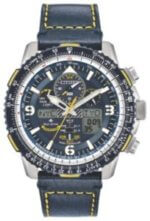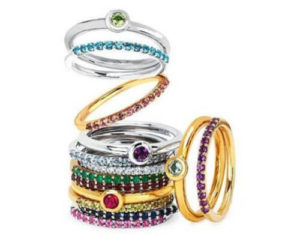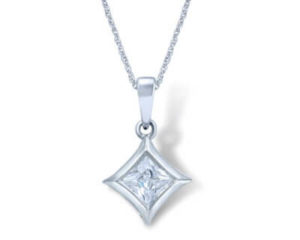Looking Ahead: Strategies For 2019
The outlook among economic forecasters is positive for U.S. retail sales for the holiday season and year in total. Deloitte, the London-based multinational financial services firm, forecasts holiday retail sales this year (excluding automobiles and gasoline) to surpass last year’s 5% growth to reach upwards of 5.6% year-over-year between November and January, exceeding $1 trillion.
 Deloitte cites positive economic factors fueling strong retail sales, including tax cuts and the prospect of wage growth, a solid labor market with low unemployment, and high consumer confidence. Consumers are expected to see a disposable income growth rate in the 5% to 5.4% range this year, according to the firm’s U.S. economic forecaster Daniel Bachman, which will likely make shoppers feel comfortable to spend more on holiday purchases.
Deloitte cites positive economic factors fueling strong retail sales, including tax cuts and the prospect of wage growth, a solid labor market with low unemployment, and high consumer confidence. Consumers are expected to see a disposable income growth rate in the 5% to 5.4% range this year, according to the firm’s U.S. economic forecaster Daniel Bachman, which will likely make shoppers feel comfortable to spend more on holiday purchases.
Kiplinger, the Washington, D.C.-based publisher of business forecasts and personal finance advice, predicts 2018 will go down as a good year for retail, with sales overall rising 4.9%, better than 2017’s 4.2% pace, and the best since 2011.
According to the New York City based economic research firm, Moody’s Analytics retailers will enjoy brisk economic tail winds into 2019, at least through the first half of the year, attributing liberal spending to a strong labor market, with a robust business climate fueling higher corporate profits. But economists see the signs of an inevitable market correction, forecasting recession to hit by 2020.
Moody’s managing director of industry economics, Sophia Koropeckyj cites that the nation is experiencing robust economic growth, tightening labor and product markets, intensifying wage and price pressures, monetary tightening, and higher interest rates, which characterize a business cycle nearing its end, just prior to a recession. She notes that the wild cards are tariffs and the rise of protectionist trade policies.
In the New Year
• Watch for important market indicators early in 2019 advises Scott Hoyt, Moody’s senior director of consumer  economics. “Keep a close eye on what is going on with tariffs, and is there a risk of a trade war. Watch for indications about the anticipated pace of interest rate hikes from the Federal Reserve. At some point that will start to dampen growth.”
economics. “Keep a close eye on what is going on with tariffs, and is there a risk of a trade war. Watch for indications about the anticipated pace of interest rate hikes from the Federal Reserve. At some point that will start to dampen growth.”
• Invest in and adapt to the buying patterns and habits of young shoppers, advocates Jeffrey Cohen, KGS Jewels, New York City. It’s imperative for retailers to invest in a multi-channel sales approach, he says, to meet shoppers in the way they like to shop, whether that means selling in store, online or combinations thereof (i.e. order online, pick up in store).
Jewelers, as well as anyone engaged in retail need to embrace digital and advancing technology in order to be able to satisfy the needs of today’s consumer,” says Samantha Barker, brand communications assistant manager, Citizen Watch America, New York City. She says that homing in on what you do best is critical in today’s market. “Our business continues to be strong in all of our distribution channels as we maintain our No. 1 market share position in the $50 to $1,500 price point category.”
Kiplinger predicts ecommerce will have another banner year in 2018, jumping 15% for the holidays and year overall, while in-store year-end sales will see a moderate 3.4% increase, cited as its best showing since 2014. Deloitte expects holiday ecommerce to total $128 billion, with 42% of all online purchases made on a mobile device, according to NetElixir, the Princeton, New Jersey-based digital marketing firm. These bullish projections are supported by strong ecommerce results in the first half of 2018, with about a 17% increase in online orders and 15.5% rise in revenue over 2017.
 • Stay focused on the needs of your customers, says Cohen, whose company has concentrated on concepts and styling specific to each of its clients’ targeted needs. In our case, less was more.” Theresa Namie, merchandise manager for the Minneapolis Minnesota based manufacturer Ostbye emphasizes the importance of vendor-retailer partnerships for mutual success. She advocates jewelers take advantage of vendor resources offered like advertising material, photography, special programs and displays, and social media engagement as part of their marketing strategy.
• Stay focused on the needs of your customers, says Cohen, whose company has concentrated on concepts and styling specific to each of its clients’ targeted needs. In our case, less was more.” Theresa Namie, merchandise manager for the Minneapolis Minnesota based manufacturer Ostbye emphasizes the importance of vendor-retailer partnerships for mutual success. She advocates jewelers take advantage of vendor resources offered like advertising material, photography, special programs and displays, and social media engagement as part of their marketing strategy.
• Invest in sales training, says Michael Lerche, COO of Goldstar Jewellery, based in New York City. The differentiating factor he sees for traditional jewelry stores moving forward is a well-trained staff. “It has nothing to do with product or demographic. Retailers must invest a portion of their budget on helping their store run efficiently, and if your staff is good, your sales are too. This is always a challenge for retailers, but worth the investment of time and resources. Better training at the store level is imperative for future success.”
• Classic diamond jewelry never goes out of style. Diamond bridal remains the strongest category for the industry,  says Namie, with designs that offer vintage and modern flair among the favorites. She also cites layered pendants, stackable rings, and traditional 10-stone diamond anniversary bands popular. She advocates jewelers always have classic designs available in a variety of carat weights. “These are easy sales that can continually be added to as gifts or self-purchases.” She says the trends are in the twists in design, citing bezel settings a favorite in all genres; and halos still hot, but in more unique designs, with floral and vintage patterns prevailing, and less diamonds on the shank.
says Namie, with designs that offer vintage and modern flair among the favorites. She also cites layered pendants, stackable rings, and traditional 10-stone diamond anniversary bands popular. She advocates jewelers always have classic designs available in a variety of carat weights. “These are easy sales that can continually be added to as gifts or self-purchases.” She says the trends are in the twists in design, citing bezel settings a favorite in all genres; and halos still hot, but in more unique designs, with floral and vintage patterns prevailing, and less diamonds on the shank.
• Keep your eye on the lab-grown diamond market. Kevin Whitmore, product manager for Rio Grande, a jewelry supply house under the Richline umbrella, describes the diamond category to be at an interesting moment. “DeBeers has launched its own lab-created diamond brand, Lightbox. This has scrambled the other lab-diamond companies in the market, and adjusted the price point downwards for the entire lab-created diamond category. Natural diamonds continue to sell though, so perhaps the two markets will coexist.
Leave a Reply
You must be logged in to post a comment.